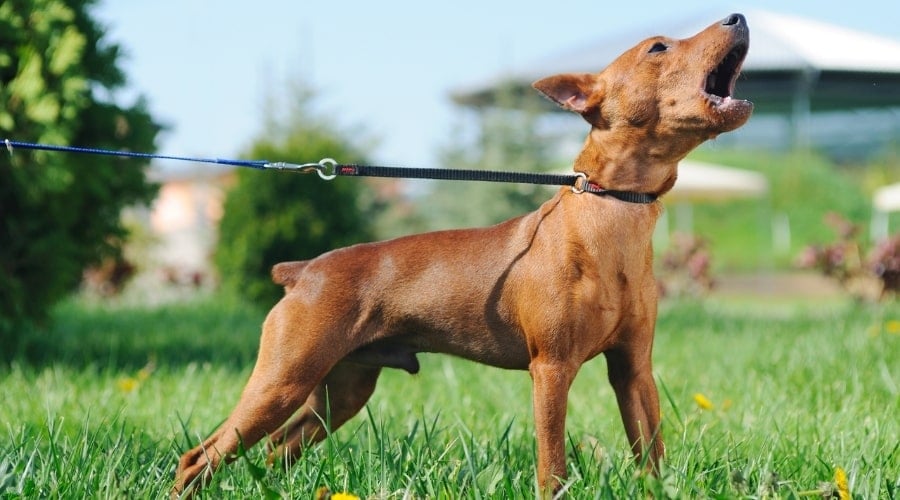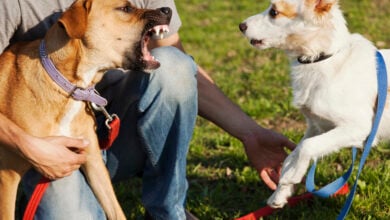Why Do Dogs Stretch When They See You? It’s Not Just a Cute Quirk!
When you purchase through links on our site, we may earn a commission. Here’s how it works.
We all know our charming canine companions have some bone-afide quirky habits, but decoding their behavior can sometimes feel like chasing our own tails. Ever noticed your dog doing a dramatic doggy stretch—front legs out, butt in the air—right when you walk through the door or grab the leash? Why do dogs stretch when they see you? Is it a sign of affection, or are they just trying to limber up for a game of fetch?
Table of Contents
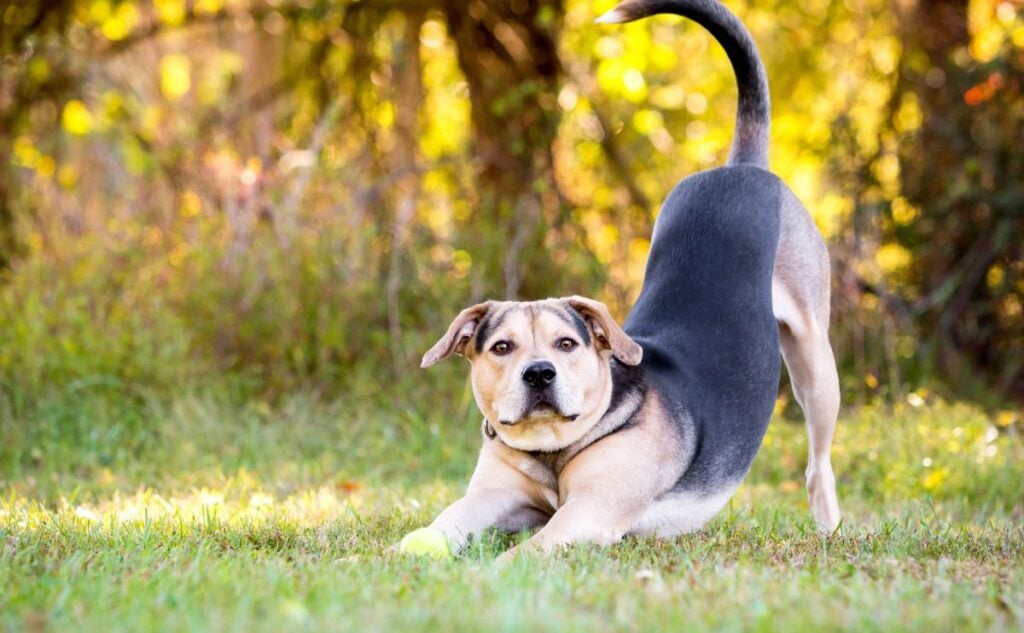
Why Do Dogs Stretch When They See You?
Sure, sometimes dogs stretch for the simple reasons that we do — to warm up their muscles for exercise or relieve tight joints. However, it turns out that dogs also sprawl themselves out toward you for more endearing reasons.
Each dog’s stretch can be unique in presentation and meaning. Some may only spread out their front legs, while others elongate their whole bodies in a slow and dramatic expression.
The Greeting Stretch
In many cases, dogs literally extend a warm greeting to you when they stretch. This stretch can signal excitement, love, the thrill of anticipated belly rubs, or just pure relief that their favorite human is finally home. It’s a completely normal and endearing move known as the “greeting stretch.”
Not all dogs exhibit the greeting stretch. For example, my furball Tiny has a different way of greeting me when I get back home — the full-on body wiggle. There’s no room for doubt that he’s excited to see me.
My dog, Falkor, is a little guy with a huge heart. He’s 25 pounds of scruffy sweetness. He greets the world with a joyful play bow, stretching into a perfect curve: head low, tail high, his whole body saying, “I’m so happy to see you!” It’s his signature hello, offered to everyone he meets, whether you’re a neighbor or a stranger with kind eyes.
But for the people he truly loves, Falkor does something more. He stretches up on his hind legs, front paws reaching as high as they’ll go, barely brushing my thigh but filled with effort and heart. It’s not just a stretch. It’s a quiet hug, a way of saying, “You matter most.” And when he does it, I can’t help but feel lucky to be one of his chosen few.
– Danielle DeGroot, Falkor’s Human & Writer at Canine Journal
The Play Bow
Tiny’s signature stretch is what’s coined the “play bow.” When he’s ready for some outdoor time, he gives me his cue, making sure I’m watching. He slowly stretches his skinny front legs from a standing position into a cute sphinx-like stance. “Mom, it’s time to take me outside.” If I don’t after the first gesture, another one is sure to follow.

The moment I close my laptop, Rio—my very expressive Golden Retriever—springs to life with a big bow stretch like he’s had a long day at the office, even though he’s just been snoozing. It makes me smile every time. That stretch has become our little ritual, his way of saying, “Work’s done. Let’s play.”
– Tara Maurer, Rio’s Human & Writer at Canine Journal
Then you have another type of play bow, which occurs when a dog very quickly extends their front legs, holds their chest close to the ground, sticks their rear end up, and wags their tail (usually accompanied by an alert, excited face). It’s actually more of a bounce than a stretch. While dogs give their humans a play bow, it’s also a specific body language posture they use to communicate with fellow canines to initiate play.
Is Dog Stretching For Communication Innate Or Learned Behavior?
Depending on the type of stretch or bow and the situation, it can be either or a little of both. For dog-to-dog communication, animal behaviorists believe play bowing is an instinctual behavior. After all, other animals like foxes, lions, wolves, and coyotes also display play bows.
When it comes to human interaction, some dogs may learn to stretch on cue if the behavior is consistently rewarded. If you find the stretching endearing and praise your dog each time they do it, they’re more likely to repeat the action in the future.
In some cases, pet owners may unintentionally teach their dogs a verbal or physical cue to stretch. For example, if your routine involves picking up a collar or leash, bending over your pup, and speaking to your dog as they stretch while they get up, your furry friend may start to associate that specific gesture with stretching—eventually responding to it as a cue.
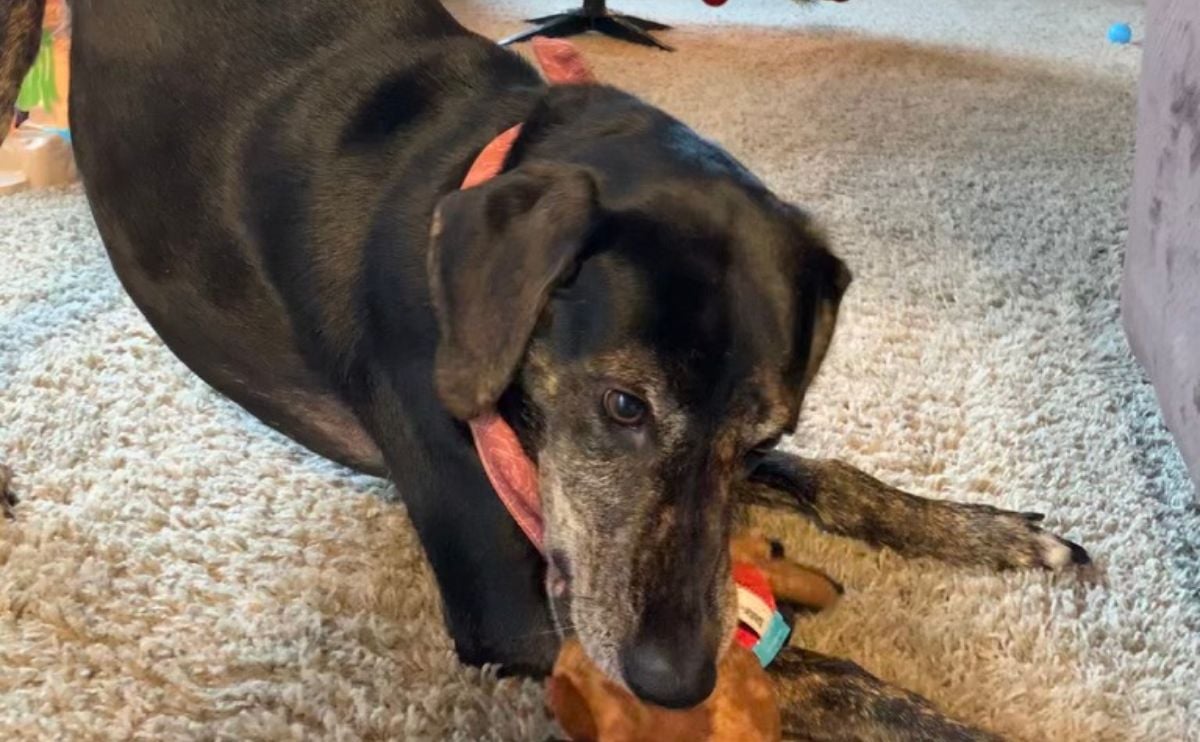
For the longest time, I thought my dog was playing a trick on me. Every time I’d bend down to put her collar on, she’d suddenly drop into this dramatic, slow-motion stretch, front legs out, butt in the air, big sigh like she was starring in her own yoga video. And, of course, she’d wait until I was already crouched down, making me awkwardly hover there while she did her thing. I used to find it so annoying, like, why not stretch before I get there?
However, after conducting some research, I discovered that when dogs stretch in front of you, it’s actually a sign of affection and comfort. They’re happy to see you, relaxed in your presence. Now, every time she stretches before heading out, I see it for what it really is: a quiet little gesture of love, her way of saying she’s happy I’m there.
– Kimberly Alt, Rescue Dog Mom, Writer & Pet Insurance Expert at Canine Journal
More Dog Stretching Meanings
Some other behavioral or physical reasons dogs stretch include:
- To indicate to a stranger that they mean no harm and are open to interaction
- To release tension and anxiety
- To loosen tight muscles after waking up from a long snooze
- To alleviate muscle pain after strenuous exercise
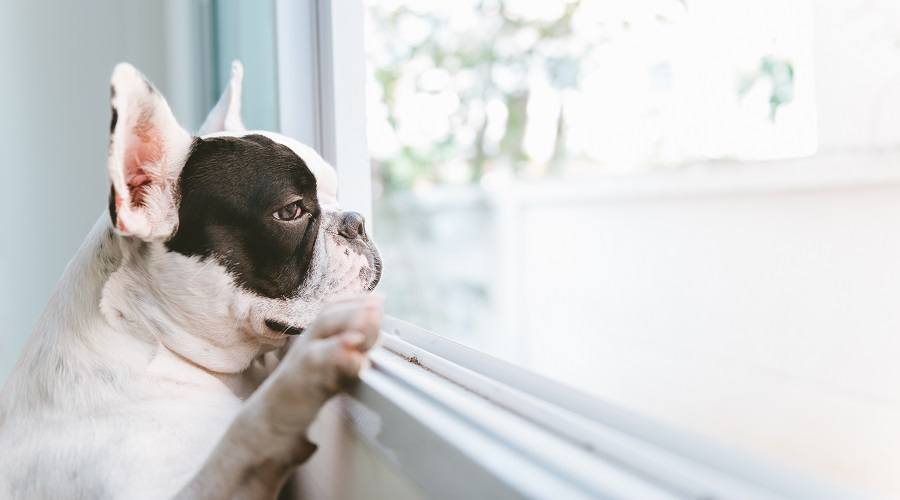
When Stretching Can Be A Warning Sign
A dog in pain might stretch out their front legs and chest onto the ground with the rear end raised to relieve discomfort. This stretch, often called the “prayer position,” may indicate abdominal pain from a medical condition, such as canine bloat, pancreatitis, or an intestinal blockage, among other reasons. If you notice your dog in the prayer position frequently, it’s important to consult with your veterinarian as soon as possible.
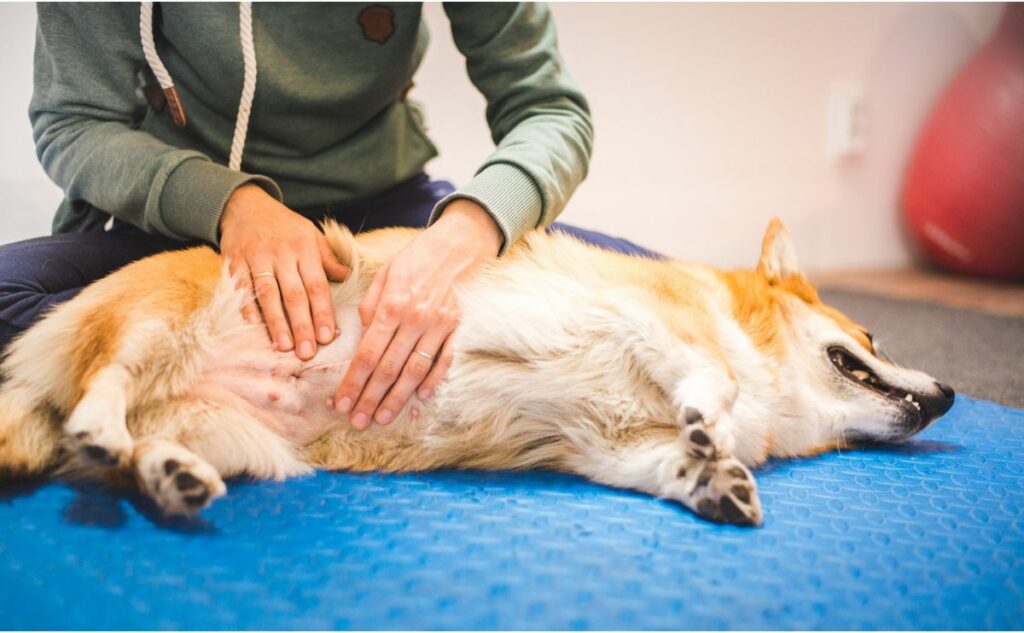
The Dog “I Love You” Stretch Goes Viral
Social media is full of clips of absolutely adorable dogs doing the “I love you” stretch. When yours does, do you always say “BIG STRETCH?” I always say this and find it hilarious that this seems to be the unofficial but universal way to respond to your pup’s long, loving stretch. Some dogs keep it a simple front-leg bow, but others get their whole bodies in the groove. Here are some of my favorites.
@moosethecockapoo
Moose was reportedly the original viral sensation, racking up over 4 million views last year and even getting a feature story in Newsweek.
@knight_thepit
knight_thepit, a TikTok canine celebrity with 3.6 million followers, had to get in on the “I love you” stretch action.
Gotta Add The Sound Effects
YouTuber Sterling of Life of Sterling adds his own mighty twist to up the competition of the most dramatic stretcher.
Interpreting Other Quirky Dog Behavior
If you’ve ever wondered why your dog constantly paws you or licks your hands, we’ve got the answers you’re dying to know. Or find out why your pup follows you everywhere you go. Our furry friends are love bugs in so many ways, but it can get overwhelming at times. Ever heard of personal space?! See if your dog makes our list of the most clingy breeds. Also, discover the 25 most affectionate dog breeds.
How does your furry friend show their love for you? Please let us know in our comments below!

